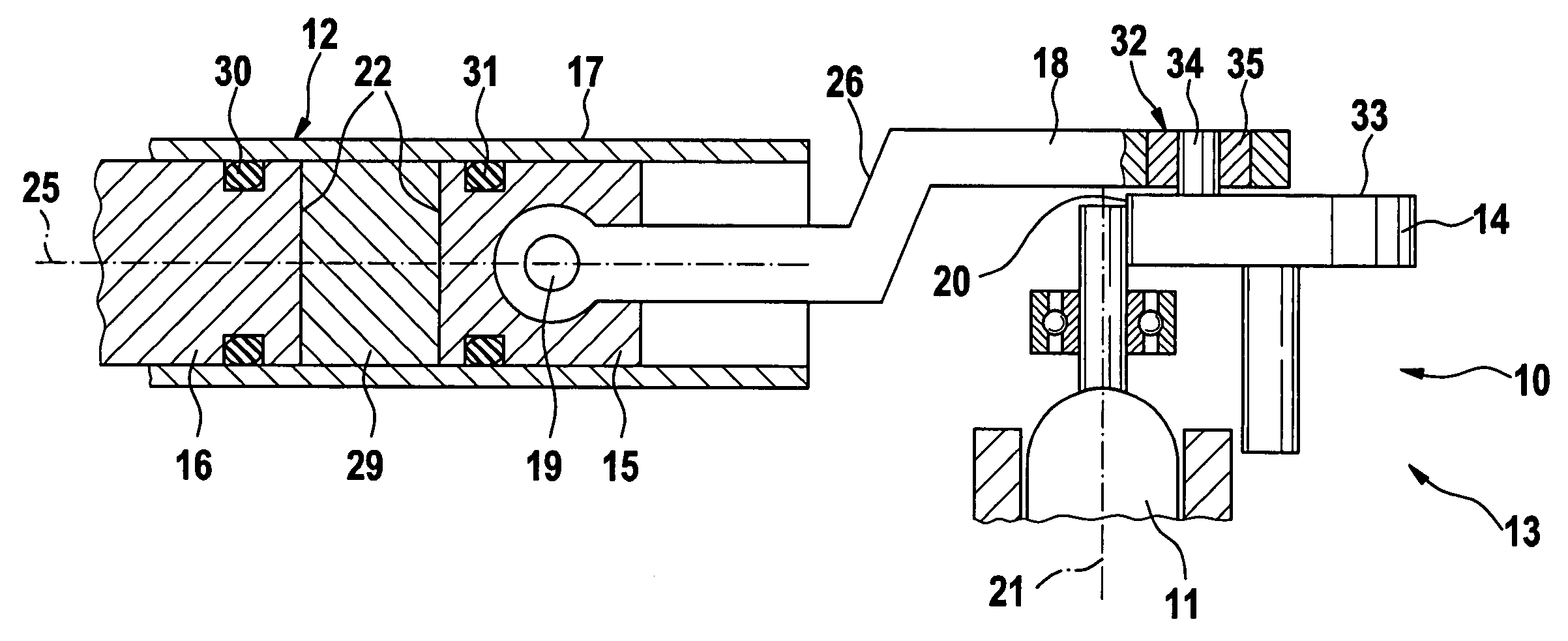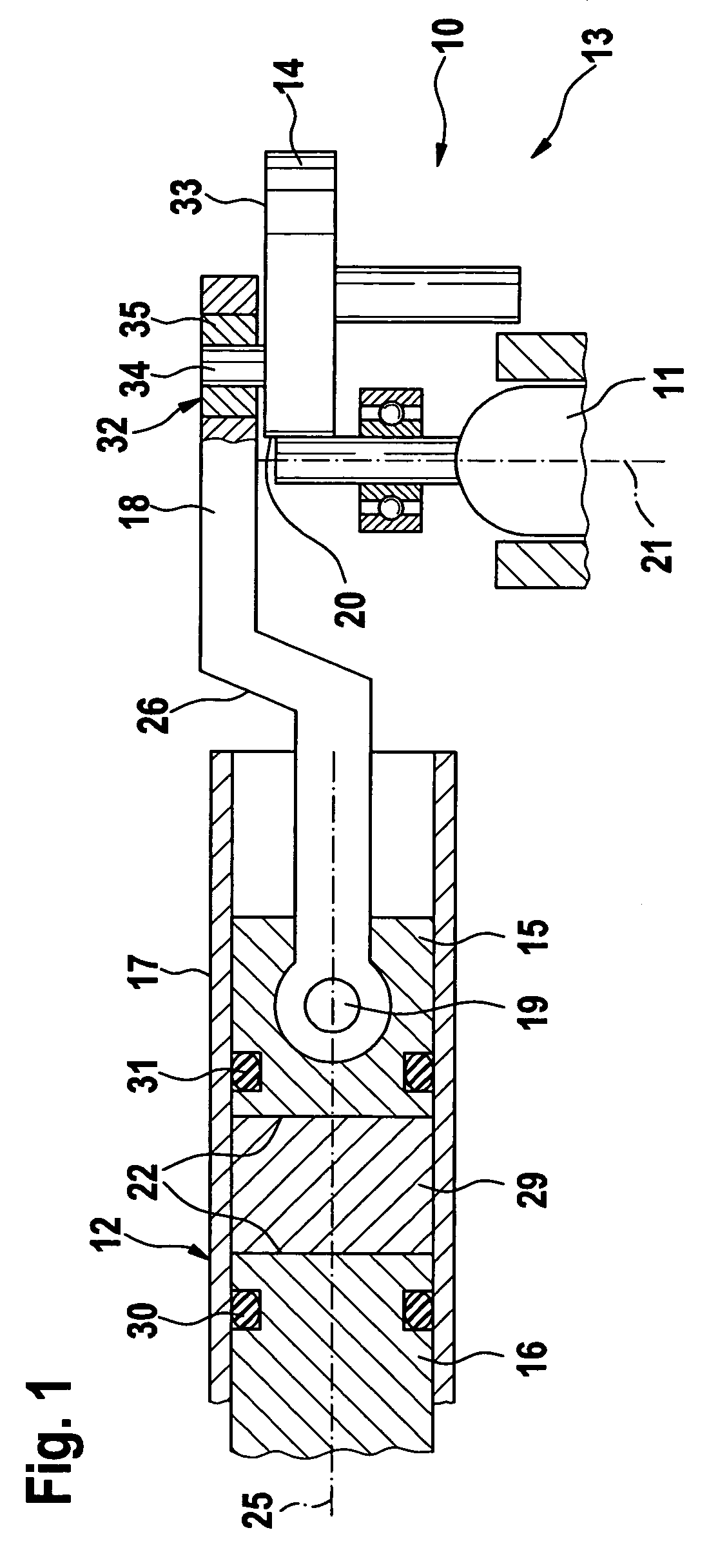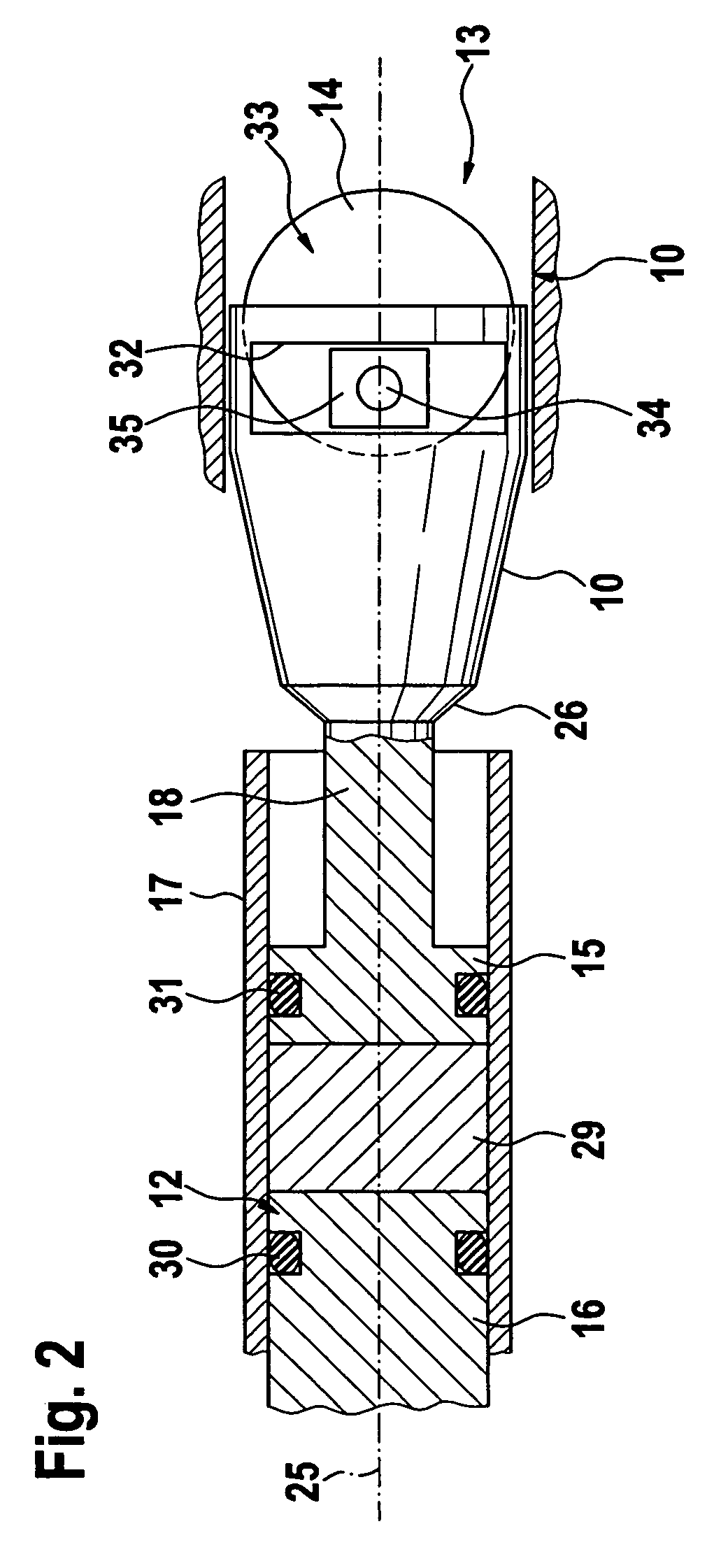[0005]An electric
power tool according to the present invention, in particular an electric hammer, includes a
cam driven by a drive unit and an impact mechanism with moving parts; at least two of the moving parts are able to move inside a separate guide cylinder that is stationary in relation to the moving parts and the cam. In particular, a piston and a striker can be provided as the moving parts; the piston that can be moved by the drive unit is able to actuate the striker in a known fashion via an
air cushion. The piston and striker can suitably have the same
diameter. An electric hammer designed in such a way has a quality equivalent to the known electric hammers with different impact mechanisms.
[0006]Preferably, the piston is connected to the drive unit via a drive element. The embodiment according to the present invention advantageously permits the length of the electric
power tool to be shortened. It is thus possible not only for a new designer aspect to be taken into consideration, but also primarily to achieve a slim contour of the electric
power tool, as a result of which it is simultaneously also possible to shift the center of gravity and improve the safety of the unit's handling.
[0007]Preferably, the piston and the drive element are connected to each other by means of a pin. In a preferred embodiment form, a pin axis of the pin and the rotation axis of the drive unit can be oriented at an angle in relation to each other, for example of 90°. It is also possible for the piston and the drive element to be embodied as integrally joined to each other.
[0008]In a modification of the present invention, it is possible to adjust an angle between a longitudinal axis of the impact mechanism and a rotation axis of the drive unit. If the drive element is embodied in the form of a cranked rod, then it is advantageously possible to vary an angle between the longitudinal axis of the impact mechanism and the rotation axis of the drive unit. This permits achievement of a new designer-based construction. In addition, this permits an advantageous shifting of the center of gravity in that the drive unit is situated centrally in relation to a longitudinal span of the
handle. This permits a reduction of a height of the unit, which has a favorable effect on the
weight distribution in the unit and consequently on its handling. On the whole, the embodiment according to the present invention makes it possible to achieve an elongated, more symmetrical form in comparison to the known electric hammers.
[0009]In one embodiment form of the present invention, the drive element can be at least partially comprised of plastic. This advantageously permits a lightweight construction, which in turn makes a positive contribution to an easier, safe
operability.
[0010]In order to transmit force between the cam and the drive element, it is possible for a slider
crank to be provided. In an above-described cranked embodiment form of the drive element, the slider crank is laterally offset in relation to a longitudinal span of the drive element, which in turn permits advantageous variations in the construction of the unit, making use of new designer aspects. If the slider crank is made of plastic, then it is advantageously possible to prevent a premature deflection of the slider crank due to the above-explained high friction forces. This results in a longer service life of the slider crank and thus represents an advantageous
cost savings. To further avoid premature wear, a ball is able to move inside the slider crank.
[0011]It is also possible for a connecting link to be provided for the transmission of force between the cam and the drive element. It is possible for a sliding block to be provided between the eccentric pin and the connecting link, thus advantageously preventing or reducing an undesirable friction. In lieu of the sliding block, it is also possible to embody a different intermediate element that functions in the same manner. The connecting link is preferably embodied as straight. It can, however, also have a different form.
[0012]In an alternative embodiment form, the impact mechanism is embodied with a pot-type striker. Alternatively, an impact mechanism can be embodied with a pot-type piston, which is able to activate a pot-type striker. To reduce the weight of the structure, the pot-type piston is preferably comprised of a light
alloy. Alternatively, the pot-type piston can also be made of plastic or of a light
alloy / plastic composite. This material composition gives the unit a particularly long service life.
 Login to View More
Login to View More 


